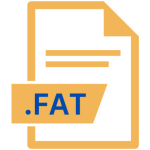.DSX File Extension

DAZ Studio XML File
| Developer | DAZ Productions |
| Popularity | |
| Category | Settings Files |
| Format | .DSX |
| Cross Platform | Update Soon |
What is an DSX file?
The .DSX file extension holds significance as it pertains to DAZ Studio XML files. These files are integral components within the DAZ Studio software environment, a popular platform utilized by digital artists and animators for creating stunning 3D renders and animations.
The .DSX file format serves as a repository for crucial information regarding scenes, objects, materials, and various settings within the DAZ Studio workspace.
More Information.
The inception of .DSX files can be traced back to the evolution of DAZ Studio, which has undergone several iterations since its introduction.
Initially conceived as a user-friendly 3D modeling and rendering application, DAZ Studio aimed to democratize the creation of digital art by providing accessible yet powerful tools to artists of all skill levels.
The introduction of .DSX file was a strategic move to enhance the efficiency of workflow management and project organization within the DAZ Studio ecosystem.
Origin Of This File.
The .DSX file format was developed and implemented by DAZ 3D, a renowned provider of 3D modeling and animation software solutions.
DAZ Studio, the flagship product of the company, introduced the concept of utilizing XML-based files (.DSX) to store scene data and configurations.
This innovation aimed to streamline the process of managing complex 3D projects and facilitate interoperability among different software tools and platforms.
File Structure Technical Specification.
.DSX file is an XML (eXtensible Markup Language) document that encapsulates a hierarchical structure of elements representing various aspects of a DAZ Studio scene. These elements include but are not limited to:
- Scene metadata such as creator information, creation date, and version compatibility.
- Definitions of 3D objects, their positions, rotations, scales, and parent-child relationships.
- Material properties and shader settings for objects, surfaces, and textures.
- Lighting configurations, camera settings, and rendering parameters.
- Animation keyframes, timelines, and interpolation curves (in the case of animated scenes).
The XML format provides a human-readable and machine-parseable representation of the scene data, making it accessible for both manual inspection and automated processing by software tools. This inherent flexibility and extensibility of XML facilitate seamless integration with other applications and workflows.
How to Convert the File?
Converting .DSX files to other formats or vice versa primarily depend on the capabilities of the software applications involved.
DAZ Studio itself provides built-in functionality for exporting scenes in various formats, including but not limited to:
- Wavefront OBJ (.obj): A widely used interchange format for 3D geometry and materials.
- Collada DAE (.dae): An XML-based format for exchanging digital assets between different 3D software applications.
- LightWave Object (.lwo): A format commonly associated with NewTek’s LightWave 3D software.
Third-party plugins and scripts may extend the conversion capabilities of DAZ Studio to support additional file formats or custom export configurations.
Advantages And Disadvantages.
Advantages:
- Portability: .DSX files encapsulate all necessary scene data and settings, enabling easy sharing and collaboration among artists and animators.
- Compatibility: DAZ Studio XML files are supported by a wide range of 3D modeling and rendering software, facilitating interoperability and data exchange.
- Version Control: The structured nature of .DSX files facilitate version control and revision tracking, essential for managing complex projects over time.
- Customization: Since .DSX files are plain text documents, they can be manually edited to fine-tune scene parameters or integrate with external scripting and automation tools.
Disadvantages:
- File Size: Complex scenes with numerous objects and high-resolution textures can result in large .DSX files, which may consume significant storage space and bandwidth.
- Performance Overhead: Loading and parsing .DSX files, especially those containing intricate scene structures or extensive animation data, can impose performance overhead on software applications.
- Compatibility Issues: Despite widespread support for XML-based formats, compatibility issues may arise when transferring .DSX files between different software versions or platforms, necessitating careful attention to version compatibility and data integrity.
How to Open DSX?
Open In Windows
- Text Editor: Use a text editor like Notepad, Notepad++, or Visual Studio Code to open and view the contents of .DSX files. Simply right-click on the file, choose “Open with,” and select your preferred text editor.
- DAZ Studio: DAZ Studio is the primary software for creating and editing .DSX files on Windows. You can open .DSX files directly within DAZ Studio by selecting “File” > “Open” and navigating to the desired .DSX file.
Open In Linux
- Text Editor: Similar to Windows, you can use text editors such as Vim, Emacs, or Gedit to open and view .DSX files on Linux systems. Open the terminal, navigate to the directory containing the .DSX file, and use the command-line text editor of your choice to view the file contents.
- DAZ Studio: While DAZ Studio is primarily available for Windows and macOS, you may be able to run it on Linux using compatibility layers like Wine or virtualization software like VirtualBox.
Open In MAC
- Text Editor: macOS users can utilize built-in text editors like TextEdit or third-party solutions such as BBEdit or TextWrangler to open and view .DSX files. Simply double-click on the file to open it in the default text editor or right-click and choose an alternative text editing application.
- DAZ Studio: DAZ Studio is fully compatible with macOS and can be used to open and edit .DSX files seamlessly. Launch DAZ Studio, go to “File” > “Open,” and select the desired .DSX file to load it into the application.












